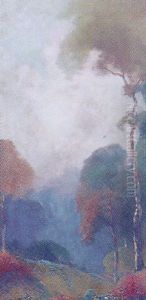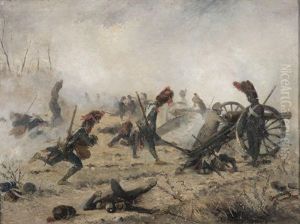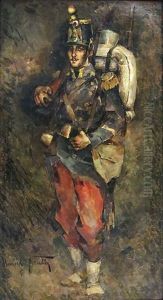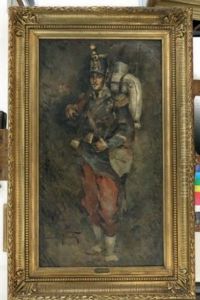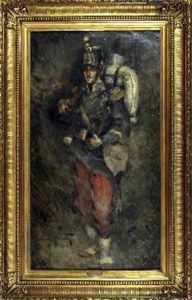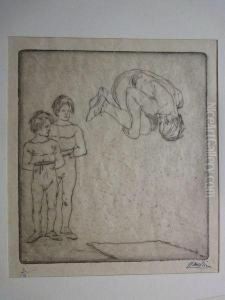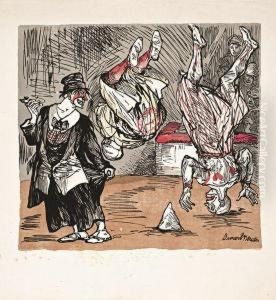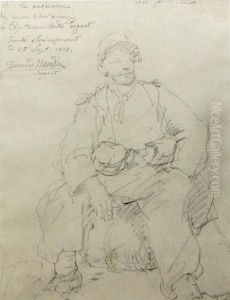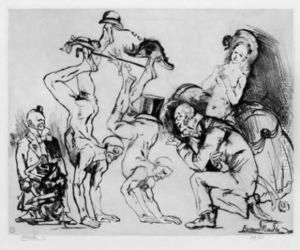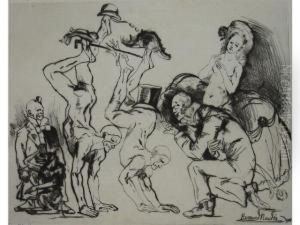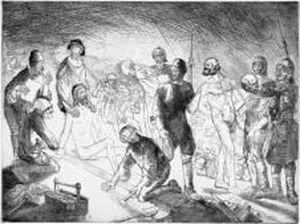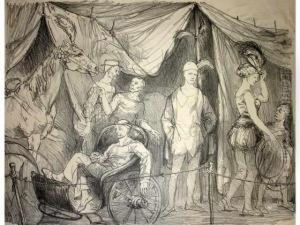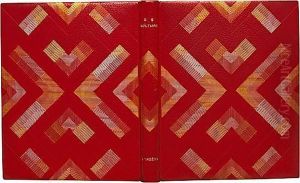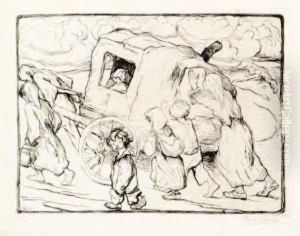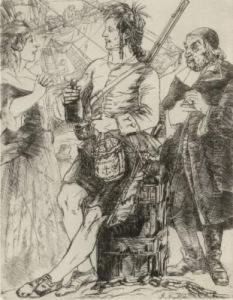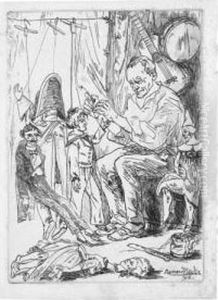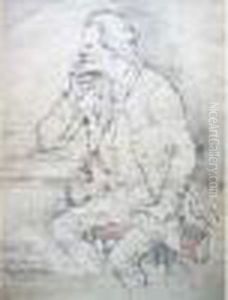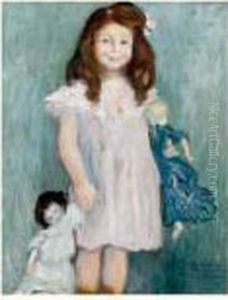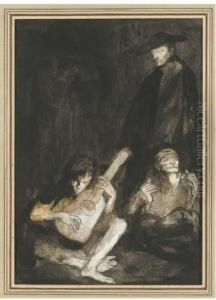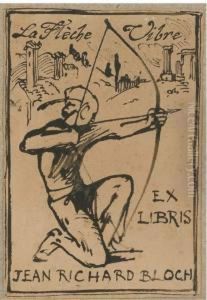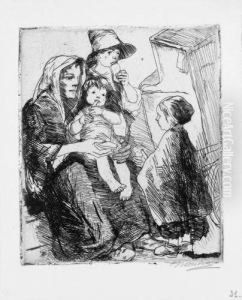Bernard Naudin Paintings
Bernard Naudin, born in 1876 in Châteauroux, France, emerged as a prominent French illustrator, printmaker, and painter in the early 20th century. His artistic journey began at the École des Beaux-Arts in Paris, where he honed his skills and developed a distinctive style characterized by its elegance and expressiveness. Naudin's early work primarily consisted of illustrations for books and magazines, which quickly garnered attention for their unique blend of classical and contemporary elements.
Throughout his career, Naudin became well-known for his contributions to the art of illustration and lithography. He was closely associated with the revival of the illustrated book in France, collaborating with publishers to produce works that were not only significant in terms of their textual content but also highly valued for their artistic merit. His illustrations often featured themes from history, literature, and daily life, rendered with a keen eye for detail and a profound sense of composition.
Naudin's work during World War I is particularly noteworthy. He served in the French army and produced a series of illustrations that captured the trials and tribulations of war with poignant clarity. These works stand as a testament to his ability to convey powerful emotions and narratives through his art.
After the war, Bernard Naudin continued to work prolifically, producing illustrations for books, journals, and standalone prints. His style evolved over the years, but he remained committed to the principles of craftsmanship and aesthetic quality that had defined his early career. Naudin's legacy is that of a versatile and dedicated artist who played a significant role in the development of French illustration and printmaking in the 20th century.
Bernard Naudin passed away in 1946, leaving behind a rich body of work that continues to be celebrated for its artistic excellence and historical significance.
![[figural Scenes]](https://www.niceartgallery.com/imgs/851189/s/bernard-naudin-figural-scenes-3acd348f.jpg)
